Smart Ways to Use a Personal Loan for Back-to-School Shopping
- Personal Finances, Personal Loans

As the back-to-school season approaches, parents and guardians are often faced with the overwhelming task of preparing their children for the upcoming academic year. From purchasing textbooks and uniforms to securing the latest technology and supplies, the costs can quickly escalate, leaving many families searching for a way to manage these expenses effectively.
In today’s financial landscape, personal loans have emerged as a practical solution for covering these costs, offering flexibility and ease of access compared to other financing options. However, like any financial tool, using a personal loan requires careful planning and strategic decision-making to avoid unnecessary debt and ensure you’re getting the best value for your money. That’s where smart personal loan tips for back-to-school shopping come in handy.
This guide is designed to provide you with smart, actionable tips on how to effectively use a personal loan for back-to-school shopping. Whether you’re looking to stretch your budget, avoid high-interest credit card debt, or simply ensure you have the funds available to give your child the best possible start to the school year, we’ve got you covered. We’ll also share expert insights and advice to help you make informed financial decisions that align with your family’s needs and long-term goals.
By the end of this guide, you’ll have a clear understanding of how to utilize a personal loan to your advantage, allowing you to focus on what truly matters—helping your child succeed in school.
Prioritize Essential Purchases First
Back-to-school shopping can be overwhelming, with a seemingly endless list of items vying for your attention. However, when using a personal loan, it’s crucial to focus on what truly matters: the essential purchases that will directly impact your child’s education and school experience. Start by identifying the core items your child needs, such as textbooks, uniforms, and essential supplies like notebooks, calculators, and technology tools required for their coursework.
To effectively prioritize these purchases, take the following steps:
- Create a Comprehensive List: Begin by listing out all potential school-related expenses, from mandatory items to optional ones. This can include textbooks, required reading materials, school uniforms, technology (like laptops or tablets), and any specific supplies needed for courses such as art or science.
- Categorize by Necessity: Divide your list into categories: “Essential,” “Important,” and “Optional.” Essential items are those that your child cannot start the school year without, such as textbooks and required uniforms. Important items might include supplies that enhance learning but aren’t critical on day one, like new technology or additional study aids. Optional items could be things that would be nice to have but aren’t necessary, like trendy backpacks or non-essential accessories.
- Research and Compare Costs: Before making any purchases, research the cost of these essential items from different retailers. Look for sales, discounts, and back-to-school promotions to stretch your loan as far as possible. Online tools like price comparison websites and apps can help you find the best deals without overspending.
- Budget Accordingly: With your prioritized list and cost estimates in hand, allocate your personal loan funds first to the “Essential” category, ensuring these critical needs are fully covered. If you have funds remaining, you can then consider the “Important” items, while still being mindful of your budget.
By following this structured approach, you ensure that your personal loan is used effectively, covering the most critical expenses first, and minimizing the risk of unnecessary debt.
For more tips on how to create a back-to-school shopping list, check out this guide from
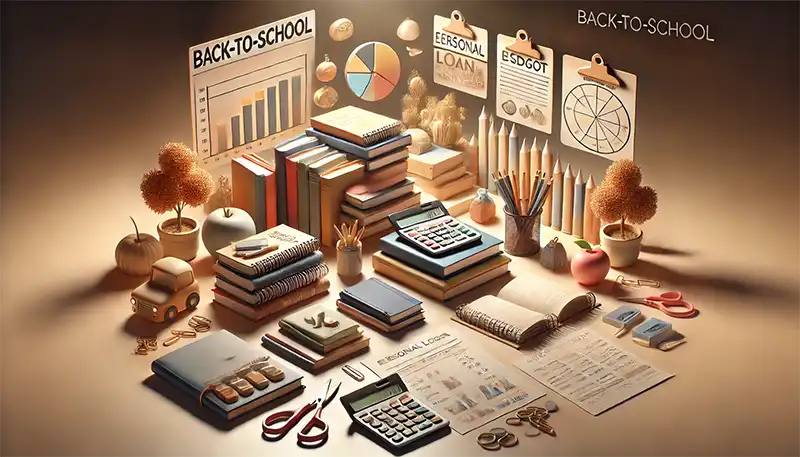
Take Advantage of Sales and Promotions
One of the smartest ways to stretch your personal loan during back-to-school shopping is by strategically timing your purchases around sales and promotions. Retailers often offer significant discounts during the back-to-school season, and planning your shopping to coincide with these events can lead to substantial savings.
How to Maximize Savings:
- Track Sales Cycles: Retailers typically have predictable sales cycles, especially during back-to-school season. Start by tracking when these sales usually occur. For instance, many stores offer discounts on clothing and school supplies in late July and early August, while technology deals might peak during Labor Day sales.
- Use Coupons and Promo Codes: In addition to sales, look for coupons and promo codes that can provide additional discounts. Websites, apps, and browser extensions like Honey or RetailMeNot can automatically apply these codes at checkout, ensuring you don’t miss out on potential savings.
- Combine Offers: Many retailers allow you to stack discounts, such as combining a sale price with a coupon or using a promo code alongside a storewide discount. Always check the terms and conditions to see if stacking is allowed, as this can lead to even greater savings.
- Sign Up for Loyalty Programs: If you frequently shop at certain stores, consider signing up for their loyalty programs. These programs often offer exclusive discounts, early access to sales, and rewards points that can be redeemed for future purchases. This is a great way to maximize the value of your loan over time.
- Plan Ahead: By planning your shopping list and timing your purchases, you can ensure that you’re buying items when they’re at their lowest prices. This strategic approach not only stretches your personal loan but also helps you avoid the stress of last-minute shopping.
By taking these steps, you can make the most of your personal loan, ensuring that you get the best deals and keep more money in your pocket.
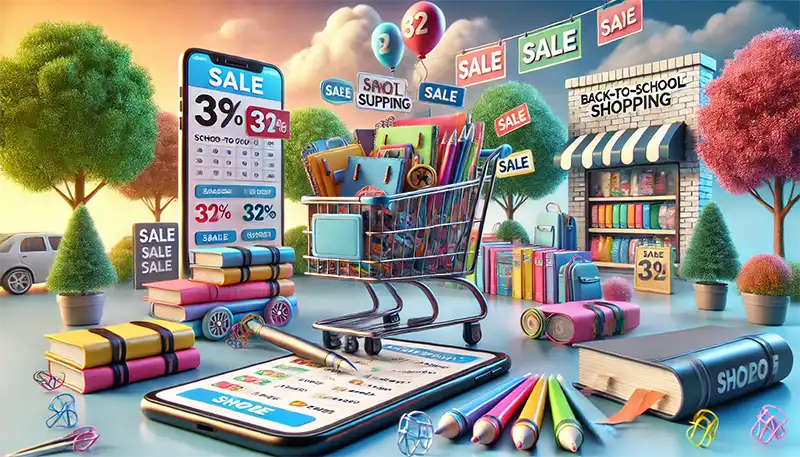
Use a Personal Loan to Invest in Long-Term School Needs
While it might be tempting to use a personal loan for immediate, short-term purchases, consider focusing on long-term investments that will benefit your child throughout the entire school year—or even beyond. Items like durable laptops, quality uniforms, and educational tools that support learning in multiple subjects can provide ongoing value, making them smart choices for personal loan spending.
Key Considerations for Long-Term Investments:
- Technology Upgrades: Investing in a reliable laptop, tablet, or other technology can enhance your child’s learning experience, providing them with the tools they need for research, assignments, and online learning platforms. Consider choosing devices with long battery life, robust processing power, and warranties to ensure they last throughout their school years.
- Durable Clothing and Supplies: Quality uniforms, shoes, and backpacks may come with a higher price tag upfront, but they often prove to be more cost-effective in the long run. These items are built to withstand the wear and tear of daily use, reducing the need for frequent replacements.
- Educational Software and Resources: Invest in educational subscriptions, software, or online courses that support your child’s academic growth. These tools can reinforce classroom learning, offer personalized tutoring, and develop skills that will be beneficial throughout their education.
- Sports and Extracurricular Equipment: If your child is involved in sports or extracurricular activities, consider using a portion of your personal loan to invest in quality equipment. This ensures their safety and enhances their performance, which can lead to long-term benefits, including scholarships and college opportunities.
By allocating your personal loan towards these long-term investments, you’re not only addressing immediate back-to-school needs but also setting up your child for sustained academic success.
Consider Flexible Repayment Options
When using a personal loan for back-to-school shopping, it’s important to think about how you’ll manage repayment. Flexible repayment options can make a significant difference in how easily you can manage your loan, particularly if you’re balancing other financial obligations.
Exploring Flexible Repayment Options:
- Choose a Loan with Adjustable Terms: Some personal loans offer adjustable repayment terms, allowing you to extend or shorten the repayment period based on your financial situation. This flexibility can help you manage your monthly payments more effectively, reducing financial strain during the school year.
- Look for Low-Interest Rates: Securing a personal loan with a competitive interest rate is crucial for keeping your overall repayment costs low. A lower rate means you’ll pay less in interest over time, freeing up more of your budget for other school-related expenses.
- Consider a Deferred Payment Option: Some lenders offer deferred payment options, where you can delay the start of your loan repayments for a few months. This can be particularly helpful during the back-to-school season when you might be dealing with higher-than-usual expenses.
- Automate Your Payments: To avoid missed payments and potential late fees, consider setting up automatic payments from your bank account. Many lenders offer discounts on interest rates for borrowers who enroll in auto-pay, further reducing your loan costs.
By carefully considering these flexible repayment options, you can ensure that your personal loan remains a manageable part of your financial plan, allowing you to focus on supporting your child’s education without added stress.
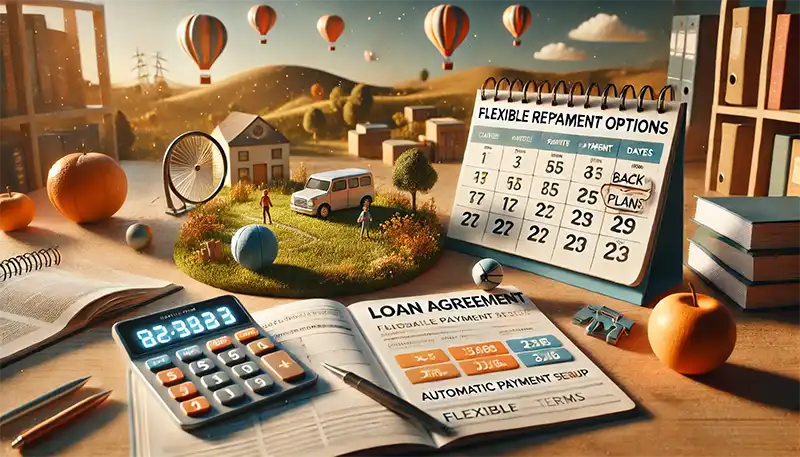
Avoid Over-Borrowing: Stick to Your Budget
One of the potential pitfalls when using a personal loan for back-to-school shopping is the temptation to borrow more than you actually need. While it may be enticing to take out a larger loan to cover additional expenses or splurges, this can lead to unnecessary debt that could strain your finances in the long run.
Tips for Avoiding Over-Borrowing:
- Calculate Your True Needs: Before applying for a personal loan, take the time to accurately calculate how much money you really need for essential back-to-school purchases. Be realistic about what is necessary and avoid the temptation to borrow extra “just in case.”
- Create a Detailed Budget: A well-planned budget is your best tool for preventing over-borrowing. Outline all anticipated expenses and determine how much you can afford to borrow based on your ability to repay the loan. Remember to factor in interest rates and any potential fees.
- Borrow the Minimum Necessary: Once you’ve calculated your needs and set a budget, borrow only what you need to cover those specific expenses. This disciplined approach will help you keep your debt manageable and reduce the overall cost of the loan.
- Resist Impulse Purchases: It’s easy to justify spending more when you have access to loan funds, but it’s crucial to resist the urge to make impulse purchases. Stick to your budget and prioritize long-term value over short-term satisfaction.
- Review Loan Offers Carefully: Not all personal loans are created equal. Some lenders might offer higher loan amounts than you actually need or can afford to repay comfortably. Review loan offers carefully, paying close attention to the terms, interest rates, and repayment conditions. Opt for a loan that best fits your budget without tempting you to borrow more than necessary.
By sticking to your budget, borrowing only what’s necessary, and carefully reviewing loan offers, you can avoid the common pitfalls of over-borrowing and keep your financial health intact.
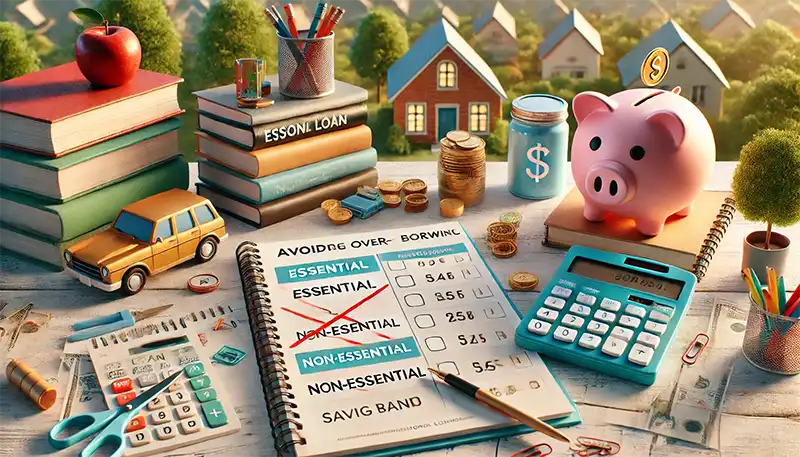
Plan for Repayment Before You Borrow
While personal loans can provide much-needed financial flexibility during the back-to-school season, it’s crucial to think ahead about how you’ll manage repayment. Without a solid plan, the convenience of borrowing could turn into a financial burden that lingers long after the school year begins.
Steps to Plan for Repayment:
- Understand the Loan Terms in Detail: Before committing to a personal loan, take the time to thoroughly review the loan agreement. This includes understanding the interest rate, whether it’s fixed or variable, the exact monthly payment amount, and the total repayment period. For example, a fixed interest rate means your payments will remain the same over time, which can make budgeting easier. This clarity can prevent future surprises and help you plan your finances effectively.
- Calculate Your Monthly Payments Accurately: To understand how a personal loan will impact your monthly budget, start by calculating your potential monthly payments. For instance, if you’re considering borrowing $1,000, divide this amount by the number of months over which you plan to repay it. If your repayment term is 12 months, your base payment would be approximately $83 per month, not including any interest or fees. This estimate gives you a starting point to see if the loan will fit within your existing financial commitments.
- Set Up an Emergency Fund as a Safety Net: Life is unpredictable, and unexpected expenses can arise at any time. Having an emergency fund in place—typically three to six months of living expenses—can help ensure that you can continue making loan payments even in the face of unforeseen events like a job loss or emergency home repairs. For example, setting aside a portion of your income each month can gradually build this safety net, providing peace of mind.
- Allocate Extra Income Towards Loan Repayment: If you receive any unexpected income, such as a work bonus, tax refund, or earnings from a side job, consider using a portion to pay down your loan principal. For example, applying a $500 tax refund towards your loan can significantly reduce the principal, shortening the repayment period and saving you money on interest.
- Regularly Monitor Your Loan and Adjust as Needed: Use your lender’s online portal or mobile app to track your loan balance and payment history. Regular monitoring allows you to see how much progress you’ve made and helps you stay on track with your repayment goals. If you notice that you’re struggling to make payments, you might consider adjusting your budget or discussing alternative repayment options with your lender.
By taking these steps before borrowing, you can ensure that your personal loan remains a tool for financial support rather than a source of ongoing stress.
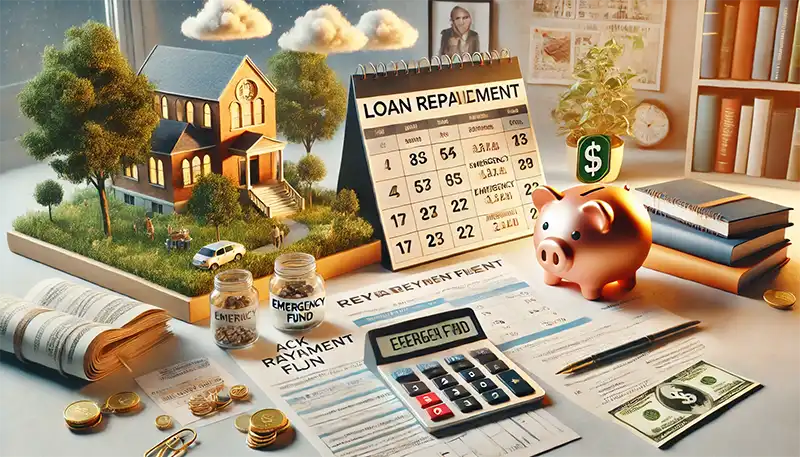
Be Mindful of Additional Costs
When planning your back-to-school budget and deciding how much to borrow with a personal loan, it’s important to consider not just the obvious expenses but also the additional costs that can quickly add up. These might include extracurricular activities, field trips, or even unexpected school-related fees that can catch you off guard.
Identifying and Managing Additional Costs:
- Include Extracurricular Activities: Many schools offer a range of extracurricular activities such as sports, music, and clubs that may require additional fees for participation. Whether it’s a uniform for a sports team or instruments for a music class, these costs can add up. Ensure you account for these when calculating your total back-to-school expenses.
- Plan for Field Trips and School Events: Schools often organize field trips, events, and other activities that may require payment. These costs can come up unexpectedly, so it’s wise to allocate a portion of your loan for such events. This way, your child can participate without adding to your financial stress.
- Consider Technology and Supply Upgrades: As the school year progresses, your child may need additional supplies or technology upgrades. For example, they may require specialized software, additional notebooks, or even repairs to their laptop or tablet. Planning for these potential expenses can prevent them from becoming a financial burden later on.
- Set Aside a Contingency Fund: Given the unpredictable nature of school expenses, consider setting aside a small portion of your loan as a contingency fund. This can help cover any unexpected costs that arise during the school year, ensuring you’re not caught off guard.
By being mindful of these additional costs and planning accordingly, you can use your personal loan more effectively, ensuring all aspects of your child’s school year are covered without putting undue strain on your finances.
Conclusion: Smart personal loan tips for back-to-school shopping
Navigating the back-to-school season can be challenging, especially when managing the associated costs. A personal loan can provide the financial support you need to ensure your child has everything required for a successful school year. However, it’s crucial to approach borrowing with a strategic mindset, ensuring that you maximize the benefits of the loan while minimizing potential financial strain.
By prioritizing essential purchases, taking advantage of sales and promotions, and focusing on long-term investments, you can stretch your loan further and make smart financial decisions. Planning for repayment before borrowing, being mindful of additional costs, and avoiding the temptation to over-borrow are all key strategies that will help you manage your loan effectively and keep your finances on track.
Remember, the goal is to use the loan as a tool for financial flexibility—not as a source of stress. With careful planning, informed decision-making, and a focus on your long-term financial health, you can navigate the back-to-school season with confidence, knowing that you’ve made the best possible choices for your family.
Key Takeaways
- Prioritize Essential Purchases: Focus your personal loan on covering the most critical back-to-school items first, such as textbooks, uniforms, and necessary supplies, to ensure your child is fully prepared for the academic year.
- Leverage Sales and Promotions: Strategically time your shopping to take advantage of seasonal sales, coupons, and loyalty programs, stretching your loan further and maximizing savings.
- Invest in Long-Term Needs: Use your loan for durable, long-lasting items like technology upgrades and quality uniforms that will benefit your child throughout the school year and beyond.
- Plan for Flexible Repayment: Understand your loan terms, calculate your monthly payments, and consider flexible repayment options to manage your loan without financial strain.
- Avoid Over-Borrowing: Stick to a well-planned budget, borrow only what you need, and be mindful of the temptation to take on more debt than necessary.
- Anticipate Additional Costs: Plan for extracurricular activities, field trips, and other unexpected school-related expenses to avoid surprises and ensure comprehensive coverage of your child’s needs.
- Prepare for Repayment Before Borrowing: Establish a repayment strategy early, including setting up an emergency fund and allocating extra income towards loan repayment, to maintain financial stability.
Frequently Asked Questions
1. What are smart ways to use a personal loan for back-to-school shopping?
Using a personal loan wisely for back-to-school shopping involves prioritizing essential purchases, leveraging sales and promotions, and investing in long-term needs like technology upgrades. It’s also important to plan for flexible repayment options and avoid over-borrowing to ensure your loan is manageable.
2. How can I avoid over-borrowing with a personal loan for school expenses?
To avoid over-borrowing, create a detailed budget that outlines your essential school-related expenses. Borrow only the amount needed to cover these costs, and resist the temptation to borrow extra “just in case.” Careful planning and sticking to your budget are key to managing your loan responsibly.
3. Why is it important to plan repayment before taking out a personal loan?
Planning your repayment strategy before borrowing ensures that you can manage your loan without financial strain. Understanding the loan terms, calculating monthly payments, and setting up an emergency fund are crucial steps that help you maintain financial stability while using the loan effectively.
4. What should I consider when using a personal loan for back-to-school shopping?
When using a personal loan for back-to-school shopping, consider the total cost of essential items, potential additional costs like extracurricular activities, and the long-term value of your purchases. Planning ahead and leveraging sales can help you make the most of your loan.
5. How can I make the most of sales and promotions with a personal loan?
To maximize savings, time your purchases around back-to-school sales and promotions. Use coupons, sign up for loyalty programs, and combine offers whenever possible. This strategic approach can help you stretch your personal loan further and reduce overall costs.
Cascade Springs Credit Unsecured Personal Loans From A Direct Lender
Get Personal Installment Loan in 30 Minutes from Cascade Springs Credit Loans and you can use it for anything you want or need
You can get up to $800 as soon as the next business day.
Applying DOES NOT Affect Your Credit Score







